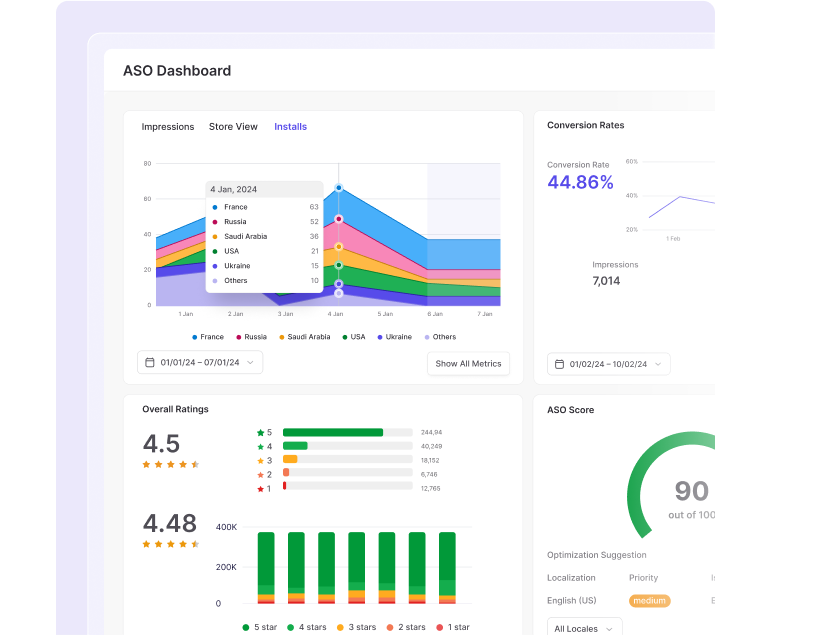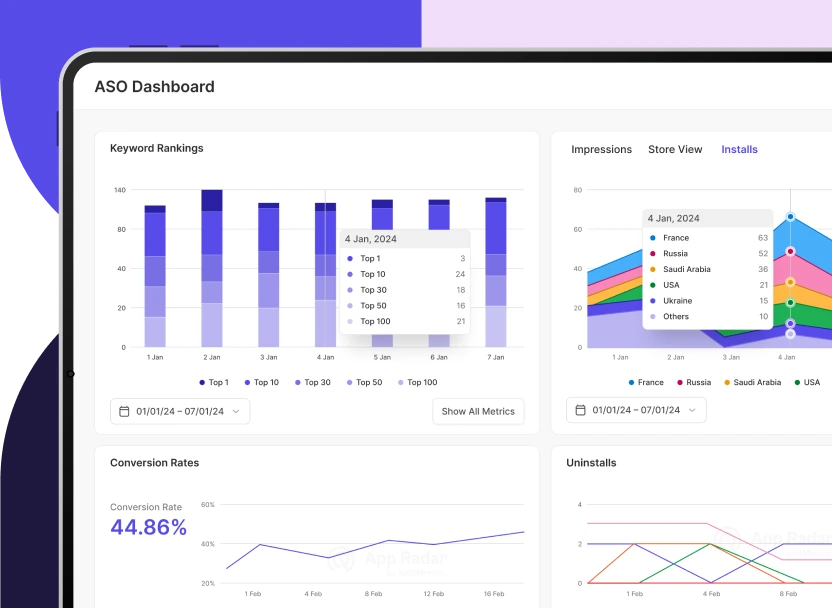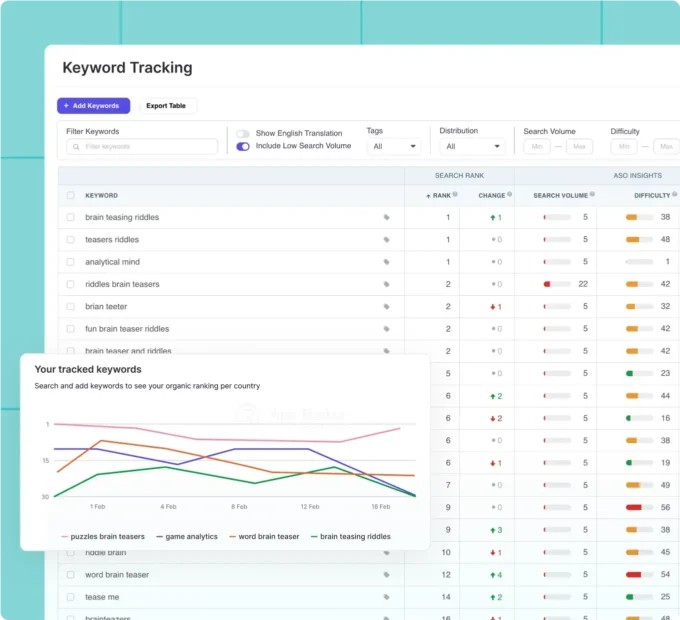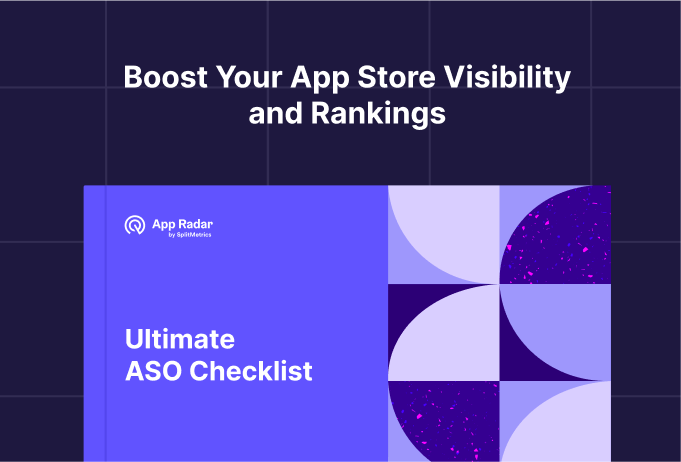Increase organic downloads, outperform the competition
The leading ASO platform to simplify app store listing optimization for growing businesses. Leverage AI-driven, data-backed insights to enhance visibility and drive organic downloads worldwide – all in one place.
4.3

Trusted by industry leaders to accelerate their ASO strategy

Empowering your ASO with smarter tools
45M
keywords analyzed regularly
7K+
apps growing with
App Radar
4M+
apps tracked
globally
25K+
ASO yearly updates
via App Radar
A mobile growth partner you can rely on
with 10+ years of expertise
- All-in-one platform
- Manage your entire ASO strategy across platforms with an easy-to-use, unified interface.
- Comprehensive data
- Access a vast keyword database and monitor competitor updates with AI-powered insights.
- Workflow efficiency
- Save time managing app updates and localizations with bulk editing and automation tools.
“
Award-winning ASO, trusted by industry experts
The mobile marketing partner most loved by customers, built for driving your app growth
Learn the latest industry news, updates, market insights, success stories and best practices






